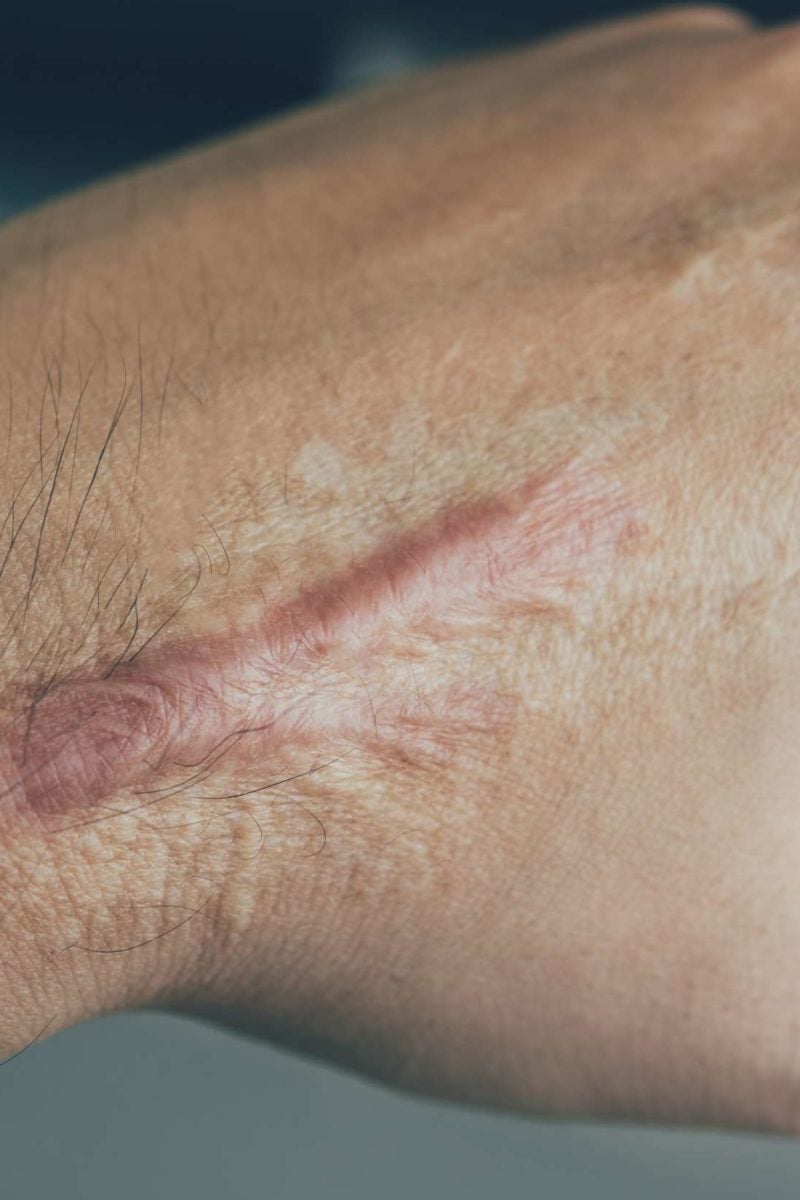Scar tissue is a common and often misunderstood aspect of healing, particularly in young teenagers who may experience various injuries or surgeries. At the age of 14, children are still developing both physically and emotionally, making the presence of scar tissue a complex issue. This article delves into the nature of scar tissue in 14-year-olds, addressing its causes, implications, and treatment options available. Understanding scar tissue can help both parents and teens navigate the emotional and physical challenges that come with it.
As adolescents engage in sports, outdoor activities, or face unexpected accidents, they may accumulate scars that can impact their self-esteem and body image. Scar tissue forms as part of the body’s natural healing process, replacing normal skin after an injury. However, it can sometimes lead to complications, such as restricted movement or sensitivity. This article aims to provide a comprehensive overview of what scar tissue means for a 14-year-old, including how it develops and what can be done to manage its effects.
In addition to the physical aspects, we will also explore the psychological impact of scars on teenagers. The teenage years are crucial for self-identity, and scars can affect how a young person perceives themselves and how they believe others perceive them. By addressing these challenges head-on, we can foster a better understanding of scar tissue and encourage positive coping strategies for young individuals.
What is Scar Tissue and How Does it Form in Teens?
Scar tissue forms as a part of the healing process after an injury or surgery. When the skin is damaged, the body works to repair itself, leading to the formation of scar tissue. This tissue differs from normal skin in both structure and function. It is typically thicker and lacks the same flexibility and pigmentation as the surrounding skin.
What Causes Scar Tissue in 14-Year-Olds?
There are several reasons why a 14-year-old may develop scar tissue:
- Injuries: Cuts, abrasions, and lacerations from sports or accidents.
- Surgical Procedures: Operations that require incisions often lead to scarring.
- Acne: Severe acne can lead to scarring on the face and body.
- Burns: Thermal injuries can result in significant scar tissue formation.
How Does Scar Tissue Impact a Teen's Life?
The presence of scar tissue can affect a teenager in several ways, including:
- Physical Limitations: Depending on the location and severity of the scar, it may restrict movement or cause discomfort.
- Emotional Challenges: Scars can lead to feelings of self-consciousness or anxiety about self-image.
- Social Interactions: Concerns about how peers perceive scars can affect social confidence.
What Are the Treatment Options for Scar Tissue in a 14-Year-Old?
There are several treatment options available for scar tissue, depending on the type and severity:
- Topical Treatments: Creams and ointments that contain silicone or other ingredients may help reduce the appearance of scars.
- Physical Therapy: For scars that limit movement, physical therapy can improve flexibility and function.
- Injections: Corticosteroid injections can help flatten raised scars.
- Surgery: In some cases, surgical intervention may be necessary to remove or revise a scar.
Are There Any Preventive Measures for Scar Tissue?
While not all scars can be prevented, some strategies can minimize their appearance:
- Proper Wound Care: Keeping wounds clean and covered can reduce the risk of scarring.
- Moisturizing: Keeping the area moisturized can aid in healing and reduce scar formation.
- Sun Protection: Protecting scars from the sun can prevent discoloration and make them less visible.
What Emotional Support Can Be Provided to a 14-Year-Old with Scar Tissue?
Emotional support is essential for teenagers coping with scars. Here are some ways to help:
- Open Communication: Encourage discussions about feelings related to scars and body image.
- Counseling: Professional support can help address anxiety and self-esteem issues.
- Support Groups: Connecting with peers who have similar experiences can provide comfort and understanding.
Can Scar Tissue Change Over Time?
Yes, scar tissue can change over time. Initially, scars may appear red, raised, or discolored. Over months and years, they often fade and flatten. However, this process varies for each individual and can be influenced by:
- Genetics: Some people are more prone to keloid or hypertrophic scars.
- Age: Younger skin tends to heal faster but may also scar more prominently.
- Location: Scars on certain body parts may behave differently.
How Can Parents Help Their 14-Year-Old with Scar Tissue?
Parents play a crucial role in supporting their teens through the challenges of scar tissue:
- Educate: Provide information about scar formation and treatment options.
- Encourage Independence: Allow teens to be involved in their care decisions.
- Foster Body Positivity: Help them appreciate their bodies and the healing process.
What Resources Are Available for Further Support?
For those seeking more information or support regarding scar tissue in 14-year-olds, consider the following resources:
- Dermatologists: Specialists in skin conditions can provide tailored advice and treatment options.
- Psychological Counselors: Professionals can help address emotional concerns related to body image.
- Online Support Groups: Many communities exist where individuals can share experiences and advice.
Conclusion: Understanding Scar Tissue in 14-Year-Olds
Scar tissue is a natural part of the healing process, particularly in active 14-year-olds. By understanding its formation, implications, and treatment options, both parents and teens can navigate the challenges it presents. Emotional support, education, and appropriate medical care can significantly impact how a young person copes with scars, promoting resilience and a positive body image.


